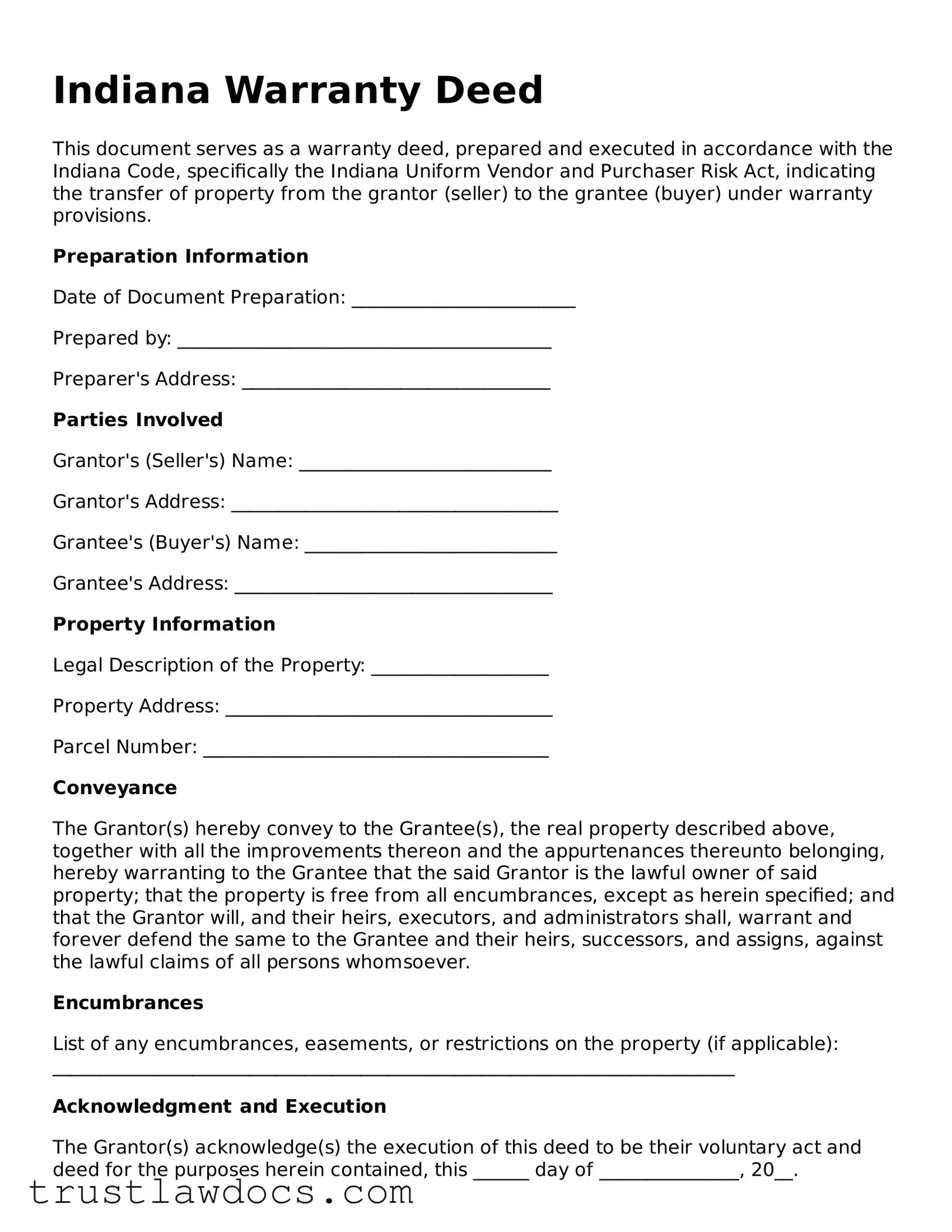Indiana Warranty Deed
This document serves as a warranty deed, prepared and executed in accordance with the Indiana Code, specifically the Indiana Uniform Vendor and Purchaser Risk Act, indicating the transfer of property from the grantor (seller) to the grantee (buyer) under warranty provisions.
Preparation Information
Date of Document Preparation: ________________________
Prepared by: ________________________________________
Preparer's Address: _________________________________
Parties Involved
Grantor's (Seller's) Name: ___________________________
Grantor's Address: ___________________________________
Grantee's (Buyer's) Name: ___________________________
Grantee's Address: __________________________________
Property Information
Legal Description of the Property: ___________________
Property Address: ___________________________________
Parcel Number: _____________________________________
Conveyance
The Grantor(s) hereby convey to the Grantee(s), the real property described above, together with all the improvements thereon and the appurtenances thereunto belonging, hereby warranting to the Grantee that the said Grantor is the lawful owner of said property; that the property is free from all encumbrances, except as herein specified; and that the Grantor will, and their heirs, executors, and administrators shall, warrant and forever defend the same to the Grantee and their heirs, successors, and assigns, against the lawful claims of all persons whomsoever.
Encumbrances
List of any encumbrances, easements, or restrictions on the property (if applicable): _________________________________________________________________________
Acknowledgment and Execution
The Grantor(s) acknowledge(s) the execution of this deed to be their voluntary act and deed for the purposes herein contained, this ______ day of _______________, 20__.
Grantor's Signature: ________________________________
Grantee's Signature: ________________________________
State of Indiana )
County of ___________ ) SS:
Subscribed and acknowledged before me this ______ day of _______________, 20__, by ____________________________________________________.
Notary Public: _____________________________________
(SEAL)
My commission expires: _____________________________
